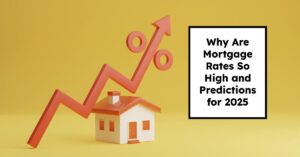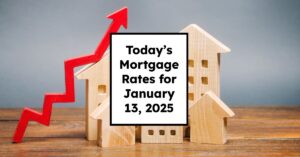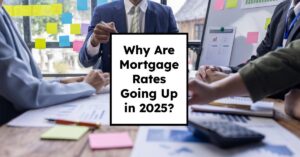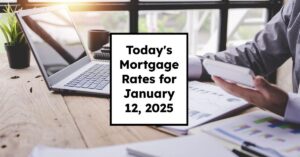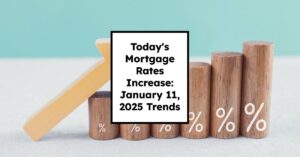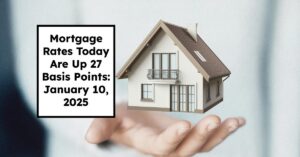If you’re curious about today's mortgage rates, you’re not alone. As of January 14, 2025, today's fixed mortgage rates have shown an increase, with the current 30-year fixed mortgage rate at 6.88%, while the 15-year fixed rate stands at 6.16%. For adjustable-rate mortgages (ARMs), the rates fluctuate but remain comparable or higher than fixed rates, which can impact your mortgage decisions.
Today’s Mortgage Rates for January 14, 2025: Trends & Insights
Key Takeaways
- 30-Year Fixed Rate: 6.88%
- 15-Year Fixed Rate: 6.16%
- 5/1 ARM: 6.81%
- VA Loans: 30-Year VA at 6.36%, 15-Year VA at 5.75%
- FHA Loans: 30-Year FHA at 6.33%, 15-Year FHA at 6.19%
Current Mortgage Rates as of January 14, 2025
Here’s a detailed breakdown of the current mortgage rates according to Zillow:
| Loan Type | Interest Rate |
|---|---|
| 30-Year Fixed | 6.88% |
| 20-Year Fixed | 6.76% |
| 15-Year Fixed | 6.16% |
| 5/1 ARM | 6.81% |
| 7/1 ARM | 6.98% |
| 30-Year VA | 6.36% |
| 15-Year VA | 5.75% |
| 5/1 VA | 6.50% |
| 30-Year FHA | 6.33% |
| 5/1 FHA | 6.39% |
These numbers are national averages rounded to the nearest hundredth, serving as a reliable reference for potential homeowners and refinance seekers.
Current Mortgage Refinance Rates
For homeowners considering refinancing, here are the refinance rates effective January 14, 2025:
| Refinance Loan Type | Interest Rate |
|---|---|
| 30-Year Fixed | 6.92% |
| 20-Year Fixed | 6.97% |
| 15-Year Fixed | 6.19% |
| 5/1 ARM | 6.85% |
| 7/1 ARM | 7.15% |
| 30-Year VA | 6.28% |
| 15-Year VA | 5.97% |
| 5/1 VA | 6.27% |
| 5/1 FHA | 6.50% |
Refinance rates are typically higher than purchase rates, making it crucial to compare options.
Understanding Fixed vs. Adjustable-Rate Mortgages
One of the fundamental decisions when choosing a mortgage is whether to opt for a fixed-rate mortgage or an adjustable-rate mortgage.
Fixed-Rate Mortgages offer stability. As a borrower, you lock in an interest rate for the life of the loan, ensuring that your monthly payments remain consistent. This predictability can be beneficial for budgeting and long-term financial planning.
Adjustable-Rate Mortgages (ARMs), on the other hand, have a variable interest rate that often starts lower than fixed rates. However, after an initial fixed period (for example, 5 or 7 years), your rate may increase or decrease based on changes in the broader economic environment. As it stands, current ARM rates are mostly higher than fixed-rate mortgages, which is atypical and might discourage borrowers from opting for them.
30-Year vs. 15-Year Fixed Mortgage Rates
When considering a 15-year versus a 30-year mortgage, it’s essential to weigh the pros and cons. Typically, 15-year mortgage rates are lower than their 30-year counterparts, which can lead to significant savings over time.
For instance, here’s a comparison based on a $400,000 loan:
- 30-Year Fixed Rate at 6.88%:
- Monthly Payment: Approximately $2,629
- Total Interest Over 30 Years: Approximately $546,459
- 15-Year Fixed Rate at 6.16%:
- Monthly Payment: Approximately $3,410
- Total Interest Over 15 Years: Approximately $213,818
While the 15-year option significantly reduces the total interest paid, the higher monthly payment could strain your budget. A middle-ground approach could involve making extra payments on a 30-year loan, allowing for quicker payoff while retaining lower monthly obligations.
The Importance of Shopping Around for Rates
When you're looking for a mortgage, shopping around can make a significant difference in the rates and terms you receive. Different lenders may offer various rates based on your credit score, the loan amount, and your financial background. This variance can lead to substantial savings over the life of your loan.
Tools like mortgage calculators allow potential buyers to see how different interest rates affect monthly payments and overall loan costs. It’s advisable to compare several lenders, including local banks, credit unions, and online lenders.
Recommended Read:
Mortgage Rate Predictions January 2025: Forecast for Homebuyers
Mortgage Rates January 13, 2025: Trends & Insights
Mortgage Rates Rise to the Highest Level Since July Last Year
Market Trends and Predictions: Will Mortgage Rates Drop in 2025?
Predicting future mortgage rates can feel like a guessing game, but various experts provide insights into where rates may be heading. On January 14, 2025, discussions from sources like CBS News and MarketWatch indicated the consensus that mortgage rates are likely to gradually decline throughout the year.
Recent predictions indicate that the 30-year mortgage rate is expected to average around 6.5% early in 2025 and possibly drop to 6.3% by the year's end. Experts specify a moderate chance of rates falling below 6%, but certainty in the movement of rates is low, dependent on economic factors.
Exploring Loan Types: Conventional, VA, and FHA Loans
Understanding the different types of loans can help in choosing what fits your financial picture.
- Conventional Loans are primary mortgage types without government backing. They often require higher credit scores and down payments but can come with competitive rates. These loans can be conforming, meaning they meet the guidelines set by government-sponsored enterprises (like Fannie Mae and Freddie Mac) for purchase, or non-conforming for those that don’t.
- VA Loans are available for veterans and active-duty military members, offering attractive rates, often without the need for a down payment or private mortgage insurance (PMI). VA loans are backed by the Department of Veterans Affairs, making them a great option for eligible borrowers.
- FHA Loans cater to buyers with less-than-perfect credit or lower income, requiring lower down payments but often at the cost of higher mortgage insurance premiums. These loans are insured by the Federal Housing Administration and are aimed at helping low-to-moderate-income borrowers qualify for a mortgage.
Understanding the differences between these loan types is crucial in determining not just which option you’re eligible for, but also which option is most financially advantageous over the course of homeownership.
Calculating the True Cost of Your Mortgage
It’s essential to consider the total cost of homeownership beyond just the monthly payment. Factors that significantly influence the overall cost include:
- Property Taxes: These can vary widely depending on your location and property value. Integrating expected property taxes into your budget can provide a clearer picture of your total monthly obligations.
- Homeowner’s Insurance: This is necessary for protecting your home against damage and is usually required by lenders. Premiums vary based on the home’s location, replacement costs, and personal factors.
- Private Mortgage Insurance (PMI): If your down payment is less than 20%, lenders typically require PMI, which can add significant monthly costs. Be sure to account for this additional charge when calculating affordability.
- Maintenance and Repairs: Budgeting for regular home maintenance and unexpected repairs is crucial for potential homeowners. Some experts suggest setting aside 1% of your home’s value each year to cover these expenses.
Considering these factors within your total cost can change your approach to choosing a mortgage and budgeting for your new home.
Personal Insights into Today's Market
With experience in understanding structure and options in the mortgage market, I observe that today’s rates create both challenges and opportunities. It’s crucial for potential homebuyers to do thorough research and filter through the options available. Timing in relation to rate fluctuations can sway decisions significantly, which is key to remain vigilant about.
Engaging with a mortgage broker or financial advisor can provide additional insights tailored to your particular circumstances. They can clarify the nuances of fixed versus adjustable rates, the implications of refinancing, and the variety of loan products available.
For example, I often advise friends and family to evaluate their long-term financial goals against the current landscape of mortgage offerings. If they plan on staying in a home for the long haul, a fixed-rate mortgage could allow them to enjoy stable payments. Conversely, if they anticipate moving in a few years, an ARM might make more sense if they can afford the risk of rate adjustments after the initial period.
Summary:
Navigating today’s mortgage rates is an essential exercise for potential homeowners and those considering refinancing. With today's 30-year rate at 6.88% and the spread across various loan types, there's a comprehensive market to understand and explore. Always keep an eye on the potential shifts in rates, as they can impact your financial future and homeownership dreams.
Work with Norada in 2025, Your Trusted Source for
Real Estate Investing
With mortgage rates fluctuating, investing in turnkey real estate
can help you secure consistent returns.
Expand your portfolio confidently, even in a shifting interest rate environment.
Speak with our expert investment counselors (No Obligation):
(800) 611-3060
Recommended Read:
- Why Are Mortgage Rates Going Up in 2025: Will Rates Drop?
- Why Are Mortgage Rates So High and Predictions for 2025
- NAR Predicts 6% Mortgage Rates in 2025 Will Boost Housing Market
- Mortgage Rates Predictions for 2025: Expert Forecast
- Will Mortgage Rates Ever Be 3% Again: Future Outlook
- Mortgage Rates Predictions for Next 2 Years
- Mortgage Rate Predictions for Next 5 Years
- Mortgage Rate Predictions for 2025: Expert Forecast
- Mortgage Rate Predictions: Why 2% and 3% Rates are Out of Reach
- How Lower Mortgage Rates Can Save You Thousands?
- How to Get a Low Mortgage Interest Rate?
- Will Mortgage Rates Ever Be 4% Again?

